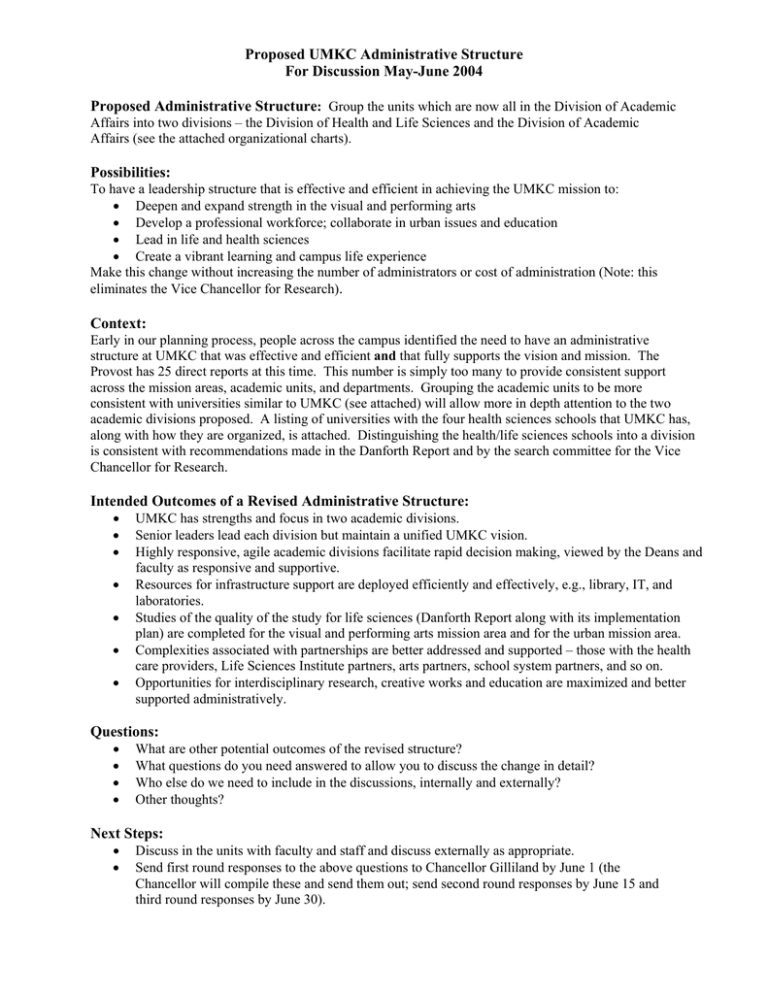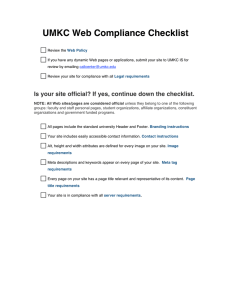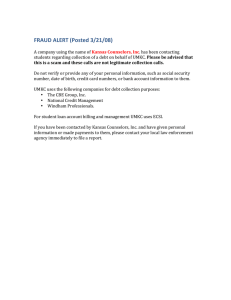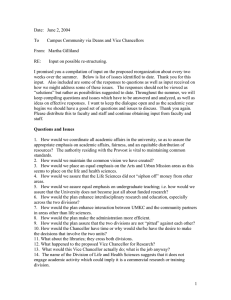Proposed UMKC Administrative Structure For Discussion May-June 2004 Proposed Administrative Structure
advertisement

Proposed UMKC Administrative Structure For Discussion May-June 2004 Proposed Administrative Structure: Group the units which are now all in the Division of Academic Affairs into two divisions – the Division of Health and Life Sciences and the Division of Academic Affairs (see the attached organizational charts). Possibilities: To have a leadership structure that is effective and efficient in achieving the UMKC mission to: • Deepen and expand strength in the visual and performing arts • Develop a professional workforce; collaborate in urban issues and education • Lead in life and health sciences • Create a vibrant learning and campus life experience Make this change without increasing the number of administrators or cost of administration (Note: this eliminates the Vice Chancellor for Research). Context: Early in our planning process, people across the campus identified the need to have an administrative structure at UMKC that was effective and efficient and that fully supports the vision and mission. The Provost has 25 direct reports at this time. This number is simply too many to provide consistent support across the mission areas, academic units, and departments. Grouping the academic units to be more consistent with universities similar to UMKC (see attached) will allow more in depth attention to the two academic divisions proposed. A listing of universities with the four health sciences schools that UMKC has, along with how they are organized, is attached. Distinguishing the health/life sciences schools into a division is consistent with recommendations made in the Danforth Report and by the search committee for the Vice Chancellor for Research. Intended Outcomes of a Revised Administrative Structure: • • • • • • • UMKC has strengths and focus in two academic divisions. Senior leaders lead each division but maintain a unified UMKC vision. Highly responsive, agile academic divisions facilitate rapid decision making, viewed by the Deans and faculty as responsive and supportive. Resources for infrastructure support are deployed efficiently and effectively, e.g., library, IT, and laboratories. Studies of the quality of the study for life sciences (Danforth Report along with its implementation plan) are completed for the visual and performing arts mission area and for the urban mission area. Complexities associated with partnerships are better addressed and supported – those with the health care providers, Life Sciences Institute partners, arts partners, school system partners, and so on. Opportunities for interdisciplinary research, creative works and education are maximized and better supported administratively. Questions: • • • • What are other potential outcomes of the revised structure? What questions do you need answered to allow you to discuss the change in detail? Who else do we need to include in the discussions, internally and externally? Other thoughts? Next Steps: • • Discuss in the units with faculty and staff and discuss externally as appropriate. Send first round responses to the above questions to Chancellor Gilliland by June 1 (the Chancellor will compile these and send them out; send second round responses by June 15 and third round responses by June 30).


